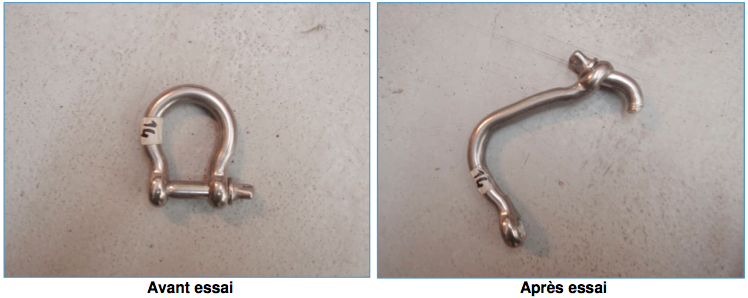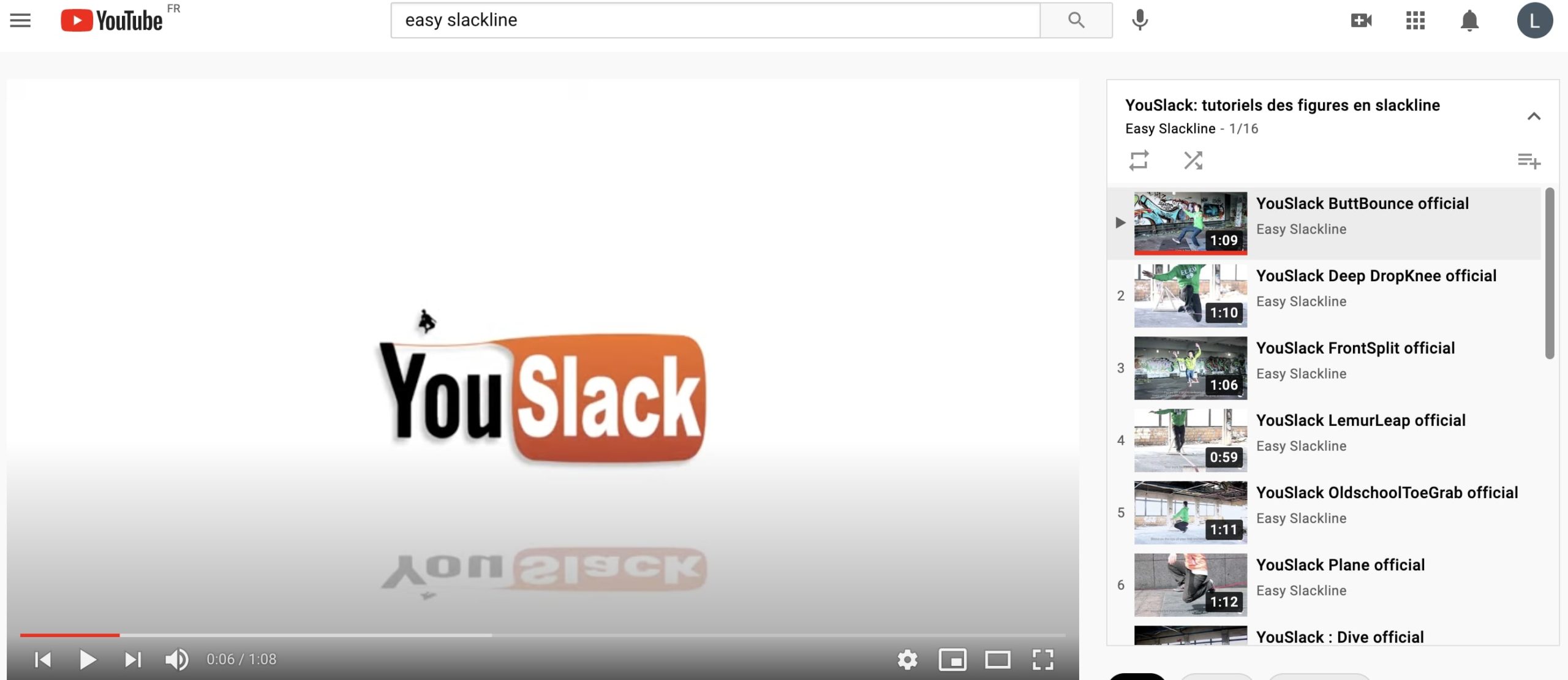Trickline / freestyle
1. What is tricklining ?
Dynamic and demanding tricklining represents the freestyle side of slacklining. The slackliner jumps and bounces, he uses the energy of the webbing to perform aerial and static figures as on a trampoline.
It is a spectacular practice, which requires an advanced technical level (to master the tricks) and a creative spirit to constantly create and perform new combos.
Trickline competitions take place like hip-hop battles, in 1VS1. Whoever wins, move on to the next round.
2. Where can I practice ?
As with slacklining, it is necessary to have two rugged, solid anchoring points at a distance of 20m or 25m depending on your level – and at a height of 1m to 2m.
Trickline competitions often take place at festivals dedicated to slacklining, or at outdoor events like the Naturals Games or Outdoormix Festival.
There are also unofficial championships in France and abroad (French Jumpline Tour).
Always remember that it is important to install a trickline on large trees with thick bark – or on a special infrastructure. The tension applied by the trickline, with repeated bounces, stresses on the material.
To find slackline and trickline spots, go to : « Where to practice slackline? »
3. Required equipment for tricklining
To start with, it is important to specify that it is OBLIGATORY to use equipment dedicated to this practice. It is also ABSOLUTELY NECESSARY TO BACK UP the installation – before and during practice.
To tighten a trickline, ratchets have the advantage of being easy to set up and very resistant . You can use two of them (one on each side) to have more power. The Freestyle Kit, which offers a choice of one or two ratchets, is definitely the ideal kit for people who want to learn this practice.
The pulleys are more intented for confirmed slackliner who want to go further, higher. The installation is complicated, which requires more knowledge and skills to safely install and practice.
No aluminium part, never !
Rule #1 for tricklining : never use aluminium gear !
This material is not suitable for trickline. because it is prone to fatigue failure.
Use mattress or crashpad
We regularly see trickliners practicing on top of a mattress/airbag during competitions. It is obviously a must-have. To begin with, get a mat – such as a crashpad – allows you to soften falls, which are numerous in trickline. It also allows you to progress faster, with more safety to try new tricks.
4. How to start tricklining ?
Height ? Length ?
There is no standard height or length to respect, it will mostly depend on your level and your equipment.
Start with those measurements – long enough to bounce, low enough to avoid bad falls :
- Around twenty meters long
- Around one and a half meters high.
Here is some information on the length/height ratio :
- High
+ Allows large amplitude tricks
– Beware of falls - Low
+ Less dangerous in the event of a fall – good for learning new tricks.
– limits the possible tricks - Short
+ easier stabilization for landings
– painful for the back - Long
+ soft and pleasant bounce, allows a great amplitude
– more difficult stabilization, specific equipment required
My first tricks
Tricklining requires to be in a good shape, but it’s still accessible to all those who deeply desire it. To begin with, you need to know and master a few basic tricks, then you will be able to progress.
– The butt bounce : bounce on the buttocks
– The chest bounce : bounce on the chest.
– The feet to feet bounce : bounce on the feet
You can discover other video tutorials on our Youtube channel : Easy Slackline – Playlist “My first freestyle tricks in video”.




